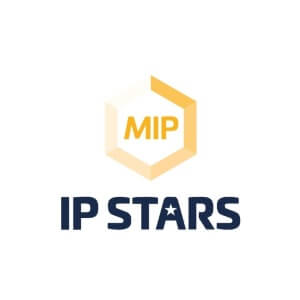“It takes many good deeds to build a good reputation, and only one bad one to lose it.” – Benjamin Franklin, Founding Father of the United States
Brands can eventually become the most valuable intangible asset of a business, but establishing reputation takes time, and building brand value is often not an intentional process within an organisation.
Brand building processes can be introduced via a holistic IP strategy that focusses the attention of key players to recognise the brand components in a business, providing mechanisms to monetise them, as well as introducing effective systems ensuring that brand value is built and not eroded.
Defining a Brand
To build a successful brand, a business must consistently reflect its brand identity. While a brand may evolve, it should remain authentic to the core principles of the business.
First, businesses need to understand what their brand represents. What values does it embody? What is its personality? Is it playful, serious, dependable, luxurious, or rugged? How does the brand present itself to employees and consumers?
A brand includes the promises made to customers and the expectations associated with the business name. It influences market perception, customer loyalty, and the willingness of people to pay for a product or service.
Trade marks are how businesses communicate their brand to consumers. While word marks are the most common form of trade marks, other elements such as slogans, logos, shapes, sounds, smells, and colours can also be used and registered as trade marks.
From both a marketing and registrability perspective, effective trade marks are distinctive and do not directly describe the product or service they represent.
Creating representative brand elements that stand out in the marketplace, along with a marketing campaign, is only part of the picture. Protecting these elements through trade mark registrations is essential. Additionally, systems and controls are needed to maintain and grow a brand’s presence and value.
Systems
The consistent application of brand elements is crucial to prevent the dilution of value and identity. Developing a comprehensive brand guide and enforcing its adherence can ensure these elements stay aligned with company values.
Typically, a brand guide encompasses aspects such as culture, wording, fonts, colours, logos, and the placement of brand elements on marketing materials, including product packaging. Brand guides ensure brand consistency, which is vital—both internally and externally. While a brand may evolve over time, it must maintain authenticity and stay true to the core essence of the business.
Furthermore, a brand guide may include intellectual property notices, which identify IP rights. This includes the use of registered and unregistered trade mark symbols, copyright and confidentiality warnings, symbols, and wording identifying patent and design rights.
Brand value is delicate and can be easily compromised by negative publicity, which might significantly alter consumer perceptions. Personal choices, ranging from groceries to automobiles, are often influenced by reputation and past experiences rather than price alone. Consequently, there is a need for internal systems that can monitor adverse perceptions (on social media, for instance) and address them before they take hold.
Robust internal systems, such as standard operating procedures (SOPs), well-maintained machinery, and knowledge management systems, help fulfil the brand promise by ensuring reliable and high-quality services or goods. In the face of bad publicity, an effective public relations team can mitigate potential damage.
Monetising a Brand
The 2024 valuation of the Apple® brand by itself (excluding factories, land, buildings, or other tangible assets) was calculated by Interbrand to be just under half a trillion US dollars. While brand values rarely appear on balance sheets, they are nevertheless of real value, and such values underscore the importance for company board members to carefully consider any proposals related to investment in brand development and monetisation.
Monetisation can extend beyond building a valuation that remains unrealised until sale. It can involve actively leveraging the brand both internally and externally. Some methods for monetising a brand include:
Product Sales: Offering goods or services under the brand, where a strong brand can command premium pricing as opposed to commodity pricing.
Franchising: Allowing others to operate under your brand for a fee. Franchise agreements should include performance, quality, and termination clauses to protect the brand from activities by the franchisee that could cause damage.
Skite Rights: Requiring manufacturers using your component or ingredient to reference your trade mark in their marketing collateral, such as “INTEL Inside.”
Licensing: Permitting third parties to use the brand for merchandise or co-branded products.
Sponsorships and Endorsements: Leveraging brand reputation for paid partnerships.
Brand Extensions: Launching new products or services under the same brand umbrella.
Selling the Brand or Business: Including brand equity in the valuation of a business.
Collaborations or Joint Ventures: Engaging in co-branded initiatives that generate revenue.
Subscription Models: Using brand trust to support recurring revenue.
White-Labelling: Licensing a branded product to be sold by others, for example, Graham Norton wines.
Advertising Revenue: Generating income for content-driven or influencer-led brands.
Crowdfunding and Community Investment: Leveraging brand goodwill to raise capital.
IP-Backed Loans or Securitisation: Using the brand as collateral for financing.
Final Thoughts:
A brand’s value relies on having loved, distinctive, protected trade marks, supported by good systems, and appropriate treatment. Professionals like brand strategists, trade mark attorneys, and IP lawyers can help build this class of intangible assets. A deliberate approach to brand building allows businesses to generate more than just cost-plus income from basic commodities.










